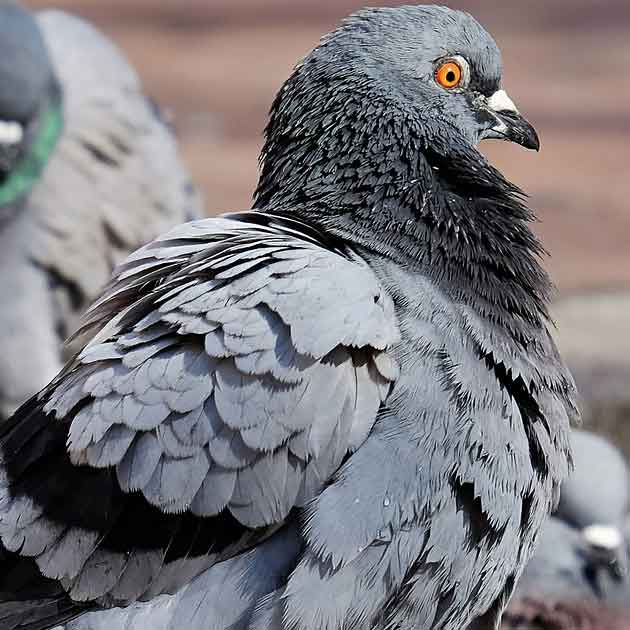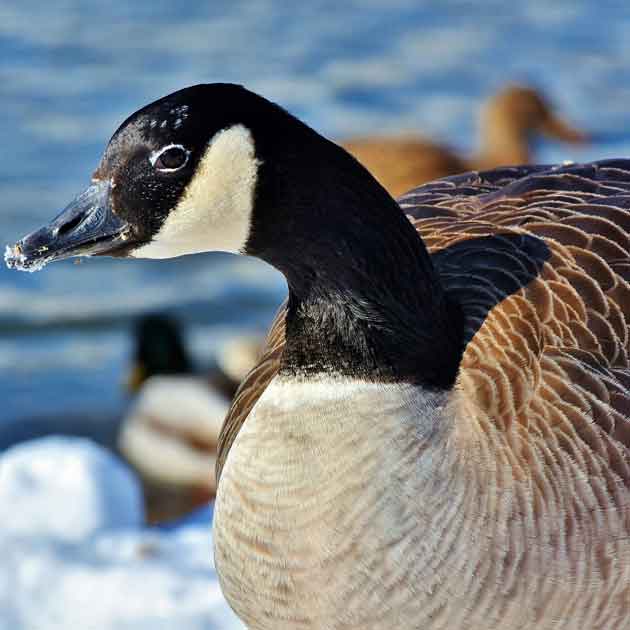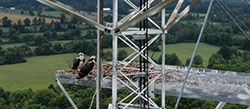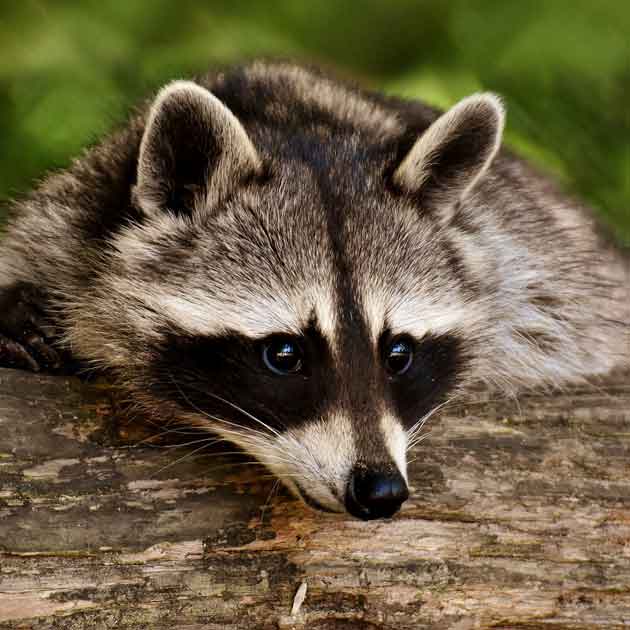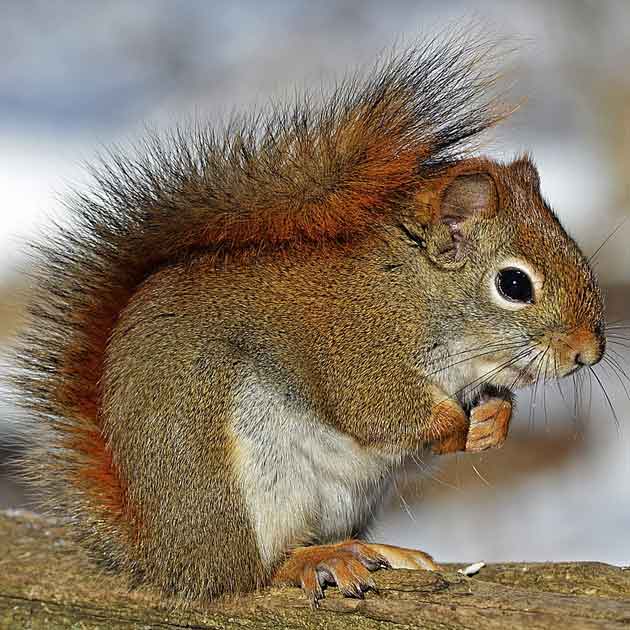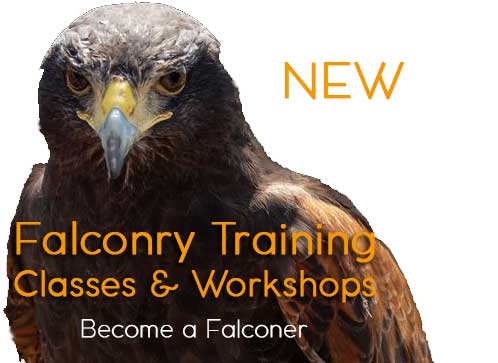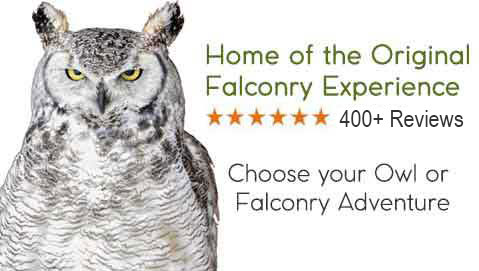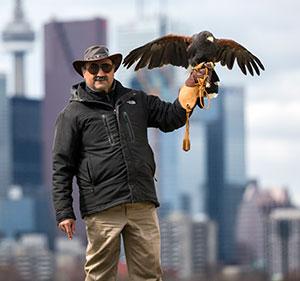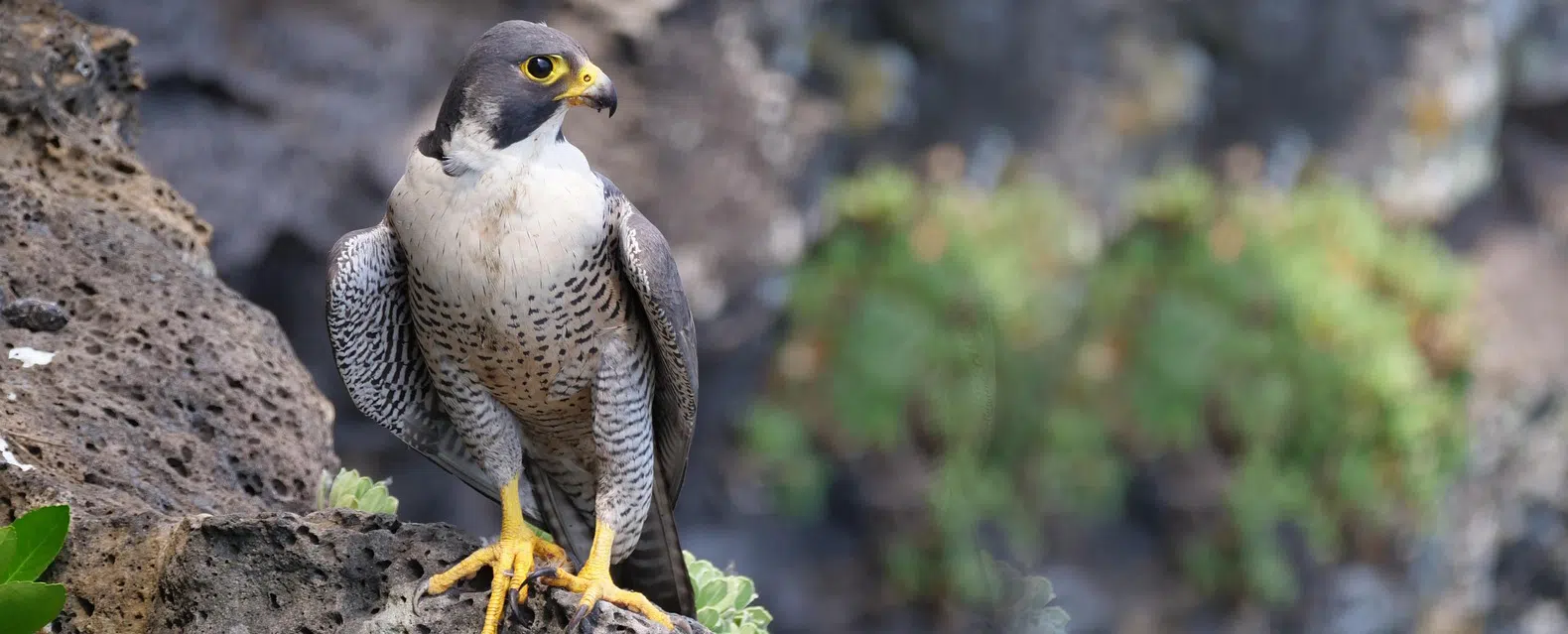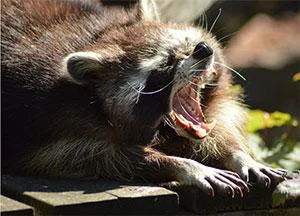BLOG | Hawkeye
News, little truths and wisdom regarding Pest Bird & Animal Wildlife Control, Falconry, and Birds of Prey....
8 Fun Facts About Raccoons
- Written by: Dan Frankian
We talk so much about Raccons and the challenges they pose or the damage they do to homes and businesses. In this post, let's look at some fun or lesser known facts about raccoons!
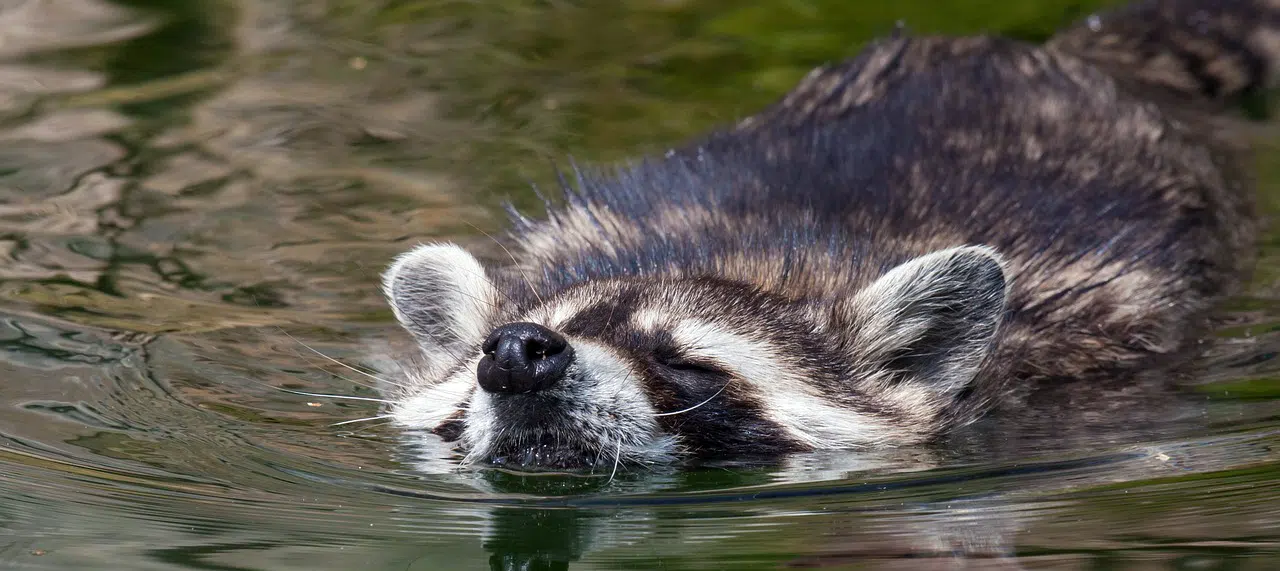
1. Raccoons Love Water!
In the wild, raccoons are most often found in wooded areas near water. Of course, all mammals require water to survive, but the clever raccoon has another use for water: Washing its food. By washing their upcoming meal, they obtain as much information about it as possible.
Do Raccoons Swim?
Indeed, they do! In fact, they are quite accomplished swimmers, able to swim for three to eight hours! While their body shape may not appear to be suited all that well for swimming, raccoons average a speed of 5km/h and can reach speeds of 25km/h (if motivated enough).
Can Raccoons Dive?
Also yes - extraordinarily well, even! Raccoons will dive underwater to escape predators or catch some fish as deep as 5 feet or 1.5 meters. A raccoon can hold its breath underwater for up to 15 minutes, which is pretty impressive for a land lubbing mammal.
2. Raccoons and their Incredible Sense of Touch
Raccoons are one of the few species in the animal kingdom who may use their sense of touch even more so than that of sight or smell when trying to identify their next meal.
What's so Special about Raccoon "Hands"?
A raccoon's "hands" or front paws are equipped with about four times more sensory receptors and stiff hairs at the tips of each front toe above the claw than its back paws. These hairs are called vibrissae and are similar to cats' whiskers - they allow the animal to identify an object even before making contact with its paw. The difference in front and back paw receptors is roughly the same ratio as that of human hands to feet. Although a raccoon front paw print looks much like a human hand print, they actually do not have opposing thumbs, but rather just 5 long fingers. That doesn't slow them down, though, or impede their ability to manipulate all sorts of objects (like your trash can lids). And, back to water - the sensitivity of their paws increases when wet.
3. Raccoons are Very Expressive
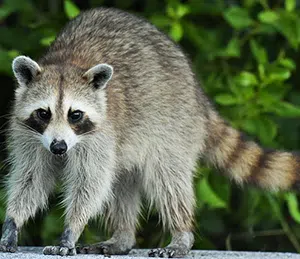 Nobody ever has accused raccoons of being quiet and unobtrusive. In fact, they are very vocal and communicate their current state of mind or emotion quite successfully.
Nobody ever has accused raccoons of being quiet and unobtrusive. In fact, they are very vocal and communicate their current state of mind or emotion quite successfully.
What does a Happy Raccoon Look or Sound like?
A happy raccoon will look relaxed and you'll see a low, slightly wagging tail and ears that are upright and pointing forward. And, if you're close enough you may even be able to hear a purring or cooing sound.
What does a Frightened or Angry Raccoon Look or Sound like?
When a raccoon is scared or angry you'll notice a raised tail and pinned ears (think of a horse). It's body will look tense and there likely will be some hissing or growling.
Do Raccoons Play for Fun?
Yes, they do - especially the youngsters. Raccoons are highly intelligent and curious by nature and will check out an unfamiliar object - probably more to determine whether it's edible or not, but they've definitely been seen batting and chasing things around, not unlike cats.
When do Canada Geese Migrate North?
- Written by: Dan Frankian
Yes, yes, spring seems to be in the distant future - especially, this week. But in reality, the arrival of migrating Canada Geese is potentially less than two months away.
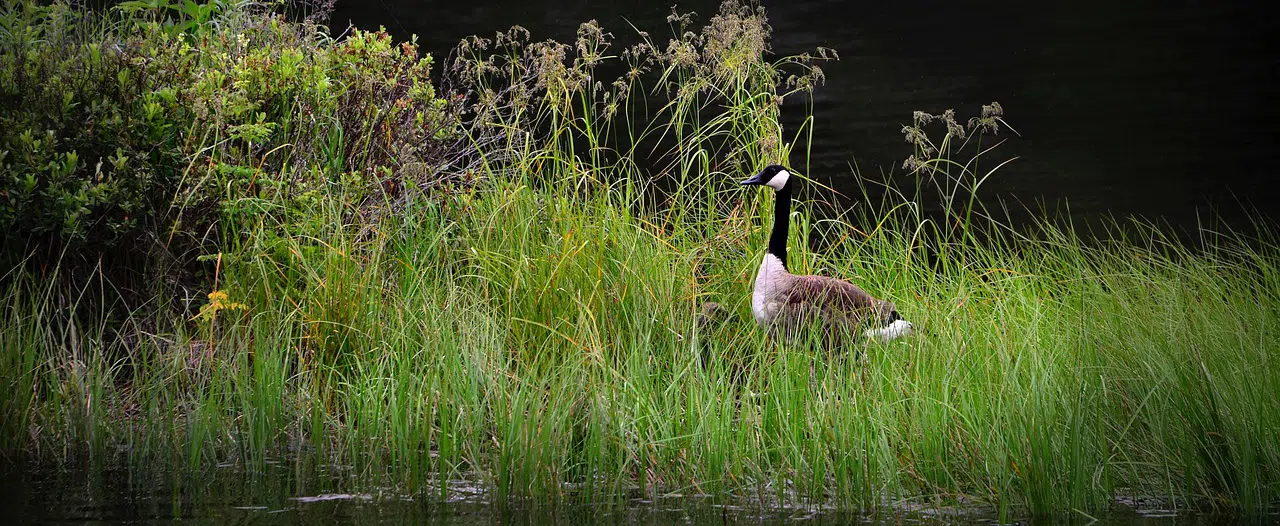
When do Canada Geese come back to Ontario?
Migrating Canada Geese (not the ones who stay year round and are often referred to as 'Popcorn Geese') will announce their arrival with a distinct and familiar honking sound anywhere from the end of March to the middle of April. They are among the first birds returning from their southern winter hangouts. Once home, they'll immediately tackle the task of mating and hatching a brood of goslings. This makes geese also one of the first birds with offspring, early in the season.
Do Geese return to the same Area or Breeding Site?
Yep, they indeed tend to return to a previously successful breeding or nesting site. That's why it is so important to convince them to move on before they have offspring. Once they're strutting around with adorable little goslings, the nesting site is deemed safe and desirable and they happily return next year. In fact, many females will return to where they hatched and start their own family right there. On the other hand, if geese are disturbed before laying eggs or nests are destroyed, they will move to a new and safer nesting site.
Migration - A Marvelous Journey
Canada Geese migrate twice a year in North America. In early spring, they fly from their overwintering grounds in the United States to their familiar breeding grounds in Canada and Alaska. In the fall, geese make the journey south to spend the winter preparing for the next breeding season.
The V-Formation
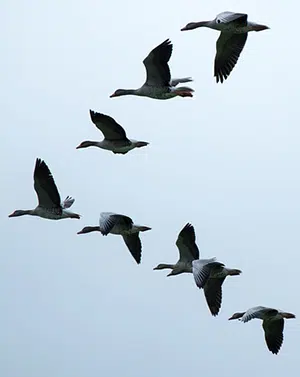 Migration is long and hard. Most geese make it, some won't. The iconic V-formation is most difficult to fly at the top or front and gets easier farther back. Each bird flies slightly higher than the bird in front and takes advantage of lesser wind resistance. That's why geese take turns taking the lead - the leader will drop back when a rest is in order and another goose will fly up and take the lead.
Migration is long and hard. Most geese make it, some won't. The iconic V-formation is most difficult to fly at the top or front and gets easier farther back. Each bird flies slightly higher than the bird in front and takes advantage of lesser wind resistance. That's why geese take turns taking the lead - the leader will drop back when a rest is in order and another goose will fly up and take the lead.
Taking care of one another
If a bird gets to a state of exhaustion or is injured, 2 other geese will accompany that bird to the ground. They will stay with the downed bird until it recovers or perishes. They will then set out to catch up with their flock.
Positive Energy
Scientists believe that the loud honking during flight is actually geese in the back encouraging the birds up front. They are the cheerleaders, you might say. Actually, geese seem to be communicating well and often in general, both during migration (or any flight) and on the ground.
Focus on the Task at hand
Geese appear to be very goal or task oriented. Migration routes are the same each year and the destination remains the same as well. Their goal is to move from North to South to protect the flock from the cold or from South to North for breeding in the spring. Goslings will accompany their parents on their first migration journey and learn from the geese elders of the flock - continuing the tradition and maintaining the goal year after year.
What do Raccoons Eat?
- Written by: Dan Frankian
Hopefully, your curiosity stems from wanting to prevent raccoons feeding on your trash bin and not because you want to feed them. Because that would create problems for both, the raccoons and you (and your neighbours). It's also illegal.
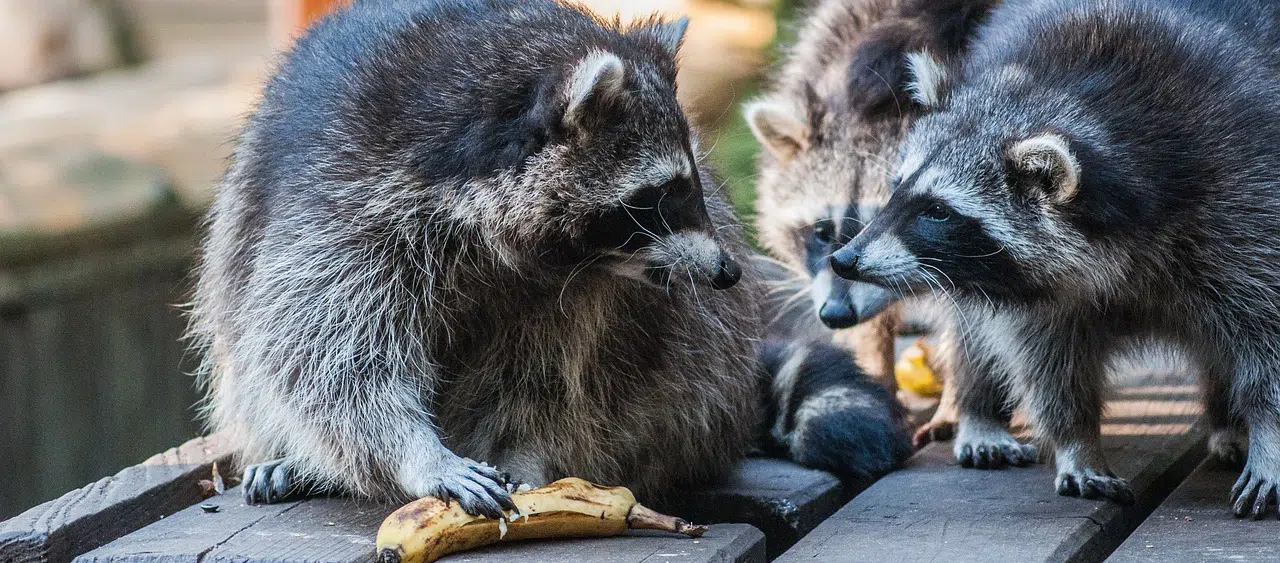
The Trash Panda
How did the Raccoon earn this somewhat unflattering nickname? Opportunistic and omnivorous, the raccoon has a varied diet that includes - well, just about anything. Omnivorous means, that they consume (and need) nutrition derived from both meat and vegetation. Being able to switch it up according to food availability due to season, location, or food competitors, contributes a great deal to the modern raccoon's impressive adaptability.
Raccoon Diet Requirements
The bones of a healthy raccoon diet doesn't look all that different from human dietary requirements. One might say, the difference lays in sourcing the ingredients :)
- Protein: Found in animal-based foods like insects, fish, and small mammals.
- Carbohydrates: Derived from fruits, grains, and vegetables.
- Fats: Obtained from seeds, nuts, and fatty fish.
- Vitamins and Minerals: From a mix of plant-based and animal-based foods.
Raccoons require both macronutrients and micronutrients to sustain their energy levels, support growth, and maintain a healthy immune system. A lack of nutritional balance leads to malnutrition or other health issues.
What do Raccoons like to Eat in the Wild?
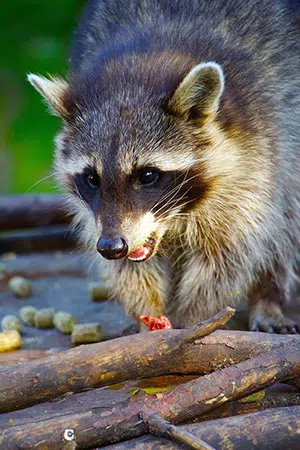 When in their natural habitat (wooded areas near water), raccoons munch on fruits, berries, nuts, corn, fish, crayfish, frogs, turtles, insects, birds and/or their eggs, rodents, rabbits, and carrion (dead animals). The beauty of such a varied diet is that any one or two of these things are available in any given season.
When in their natural habitat (wooded areas near water), raccoons munch on fruits, berries, nuts, corn, fish, crayfish, frogs, turtles, insects, birds and/or their eggs, rodents, rabbits, and carrion (dead animals). The beauty of such a varied diet is that any one or two of these things are available in any given season.
How do Raccoons Find Food in the Wild?
Raccoons are very skilled foragers and scavengers, rather than hunters. Being nocturnal, they'll roam during the night and kill or pick and eat whatever crosses their path and is manageable. They will travel up to a mile or so on their home range or territory and being the opportunists they are, they rarely leave the ground to procure food. In addition to highly evolved senses, raccoons also make use of their very sharp claws and teeth.
What do Raccoons Eat in Urban Environments?
In addition to aquatic life, birds, eggs, fruits, berries, rodents, and smaller mammals, they're quite fond of human leftovers. Hence the trash raiding. Being such skilled foragers and highly intelligent creatures, they use a combination of sensory abilities and learned behaviors to locate food. Learned behaviors? Yes, they watch and learn.
What Senses do Raccoons use to find Food?
- Touch: Raccoons have highly sensitive front paws that help them identify food items, even in the dark.
- Smell: A keen sense of smell allows them to detect food from an impressive distance.
- Sight: While they don't have the most awesome vision in the animal kingdom, it is enough to see well in low-light conditions.
In addition to relying on their senses, raccoons are keen observers and quick learners. This intelligence explains their success at opening containers, navigating urban environments, and even solving puzzles to score a meal.
How we Almost Lost The Peregrine Falcon to DDT
- Written by: Dan Frankian
The Peregrine Falcon: Almost Lost From Widespread Use Of DDT Pesticide
The peregrine falcon (Falco Peregrinus Anatum) is an extraordinary and impressive bird of prey found around the globe, everywhere except Antarctica. It is admired and celebrated for its great speed, agility and hunting prowess. The name peregrine comes from the Latin word for traveler. This traveler has one of the longest migrations in North America of up to 25,000 km (15,500 miles) round trip.
In the 1960’s this bird and other raptors - including the bald eagle and the osprey, came close to extinction, such was their great decline - mostly attributed to the widespread use of the strong pesticide DDT (dichlorodiphenyltrichloroethane). The strong connection between DDT (and pesticides in general) and the great decline in populations of peregrine falcons and other raptors, makes it critically important that the public and government use chemicals responsibly and take ownership of conservation efforts.
About the Peregrine Falcon:
- Length: 38cm to 50cm or 20 to 25 inches;
- Wingspan of 96 to 112cm or 30 to 44 inches;
- Weight of o.57 to 1.25kg or .1.25 to 2.75 lbs;
- Dark blue-grey plumage with black moustache markings, black bars on chest and long pointed wings;
- Nesting and habitat varies throughout the world. In North America it lives mostly on cliffs or high vantage points; it will find tall structures in urban environments;
- The falcon is carnivorous like other birds of prey, feeding on smaller birds, waterfowl and small mammals;
- The only threats to Peregrine Falcons are larger birds of prey and humans.
DDT was first synthesized by the Austrian chemist Othmar Ziegler in 1874. The insecticidal action of DDT was discovered by Swiss chemist Paul Muller in 1939. It was used during the second half of WWII to stop the spread of malaria and typhus in the civilian and military populations. It worked tremendously well, so well that the WHO relied on DDT in their antimalarial campaign on the 50’s and 60’s. But, there was a resurgence of malaria after DDT was banned. Its use was widespread in agriculture, as well, to protect crops from being ravaged by insects.
What does DDT do to Falcons?
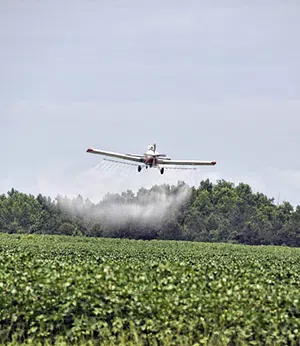
DDT interferes with calcium metabolism and the reproductive tracts in raptors leading to very thin eggshells. The shells are so fragile they break under the weight of the parent incubating the eggs or they fail to hatch because of structural weakness of the egg. The ensuing reproductive failure caused a pronounced decline in the population of many raptors including the peregrine falcon, bald eagle and osprey world wide, wherever DDT was used.
DDT is a persistent organic pollutant (POP), meaning it persists and remains in the environment for more than 15 years. It takes quite some time for it to break down. DDT and other POP’s move through the food chain by a process known as bio magnification. Insects exposed to DDT are eaten by smaller birds which are in turn eaten by falcons and other raptors. DDT also gets into the water and fish are exposed to it.. In turn, the fish are eaten by birds, water fowl and raptors. Raptors prey upon the waterfowl and water birds. As raptors are at the top of the food chain they ingest everything their prey has eaten as well. So they have far higher levels of DDT and other pollutants with concentrations high enough to threaten their very survival.
The role of Rachel Carson and her book “Silent Spring”
The book ”Silent Spring” was written by Rachel Carson and published in 1962. Carson took four years to write a very well documented “story” of how DDT entered the food chain and accumulated in the fatty tissues of animals, birds and humans, causing cancer and genetic damage. Her work was so well researched and documented, including notes and a list of experts who read and approved the manuscript, the public outcry was tremendous. It came to the attention of President Kennedy, who ordered a Government Science Advisory Committee to examine the issues raised in the book. The need to protect the environment in order to protect human life became widely accepted and the need to regulate industry to do just that was born. Silent Spring motivated the public towards a growing environmental movement towards conservation. In 1972 DDT was banned in the U.S. for agricultural use.
Solving Toronto's Raccoon Problem
- Written by: Dan Frankian
Toronto - vibrant capital of the Province of Ontario, rich in culture and history, known for the Raptors, Blue Jays, Argos, and Maple Leafs. And... Raccoons. No, not a new sports team - the masked bandits, also known as trash pandas who raid your trash bins, rip up your lawn and roofing shingles, and break into your home. Toronto has earned the dubious recognition of 'Raccoon Capital of the World'.
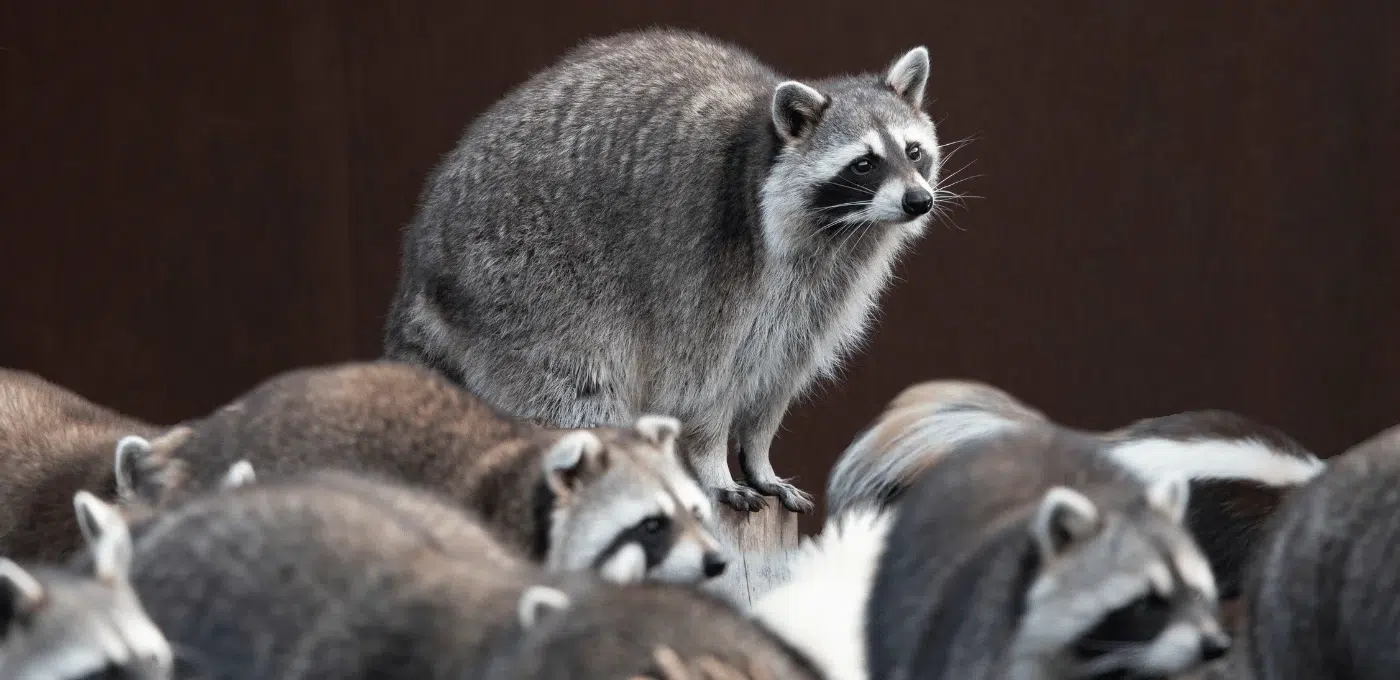
Why are there so many Raccoons in Toronto?
We can only speculate why Toronto is more popular with raccoons than other cities with similar characteristics. There's plenty of green spaces, woods, and of course - water. Lots of water. All of this is attractive to wildlife and when we add rapid development of land where raccoons and other wild animals would normally dwell and the abundance of food due to human waste, it's not hard to see why this city may be a near perfect alternative to living in the wild. If you'd like to explore this question in more details, have a look at this article »
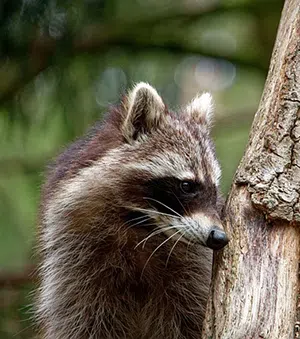 What Problems are associated with Raccoons?
What Problems are associated with Raccoons?
- Nuisance Damage
Overturned garbage cans, torn up lawns and plants - Serious Property Damage
Displaced and torn up insulation, damage to wiring and potential fire hazards, roof and water damage, ripped up vents - Diseases, including rabies
Raccoons are the most common carriers of rabies, a disease fatal in humans. Latrines in attics or other places inside your home will eat through your floors and contaminate rooms throughout the home - Injury to Pets and Humans
Cornered raccoons and/or mothers with kits can and will become aggressive and potentially harm you or your pets
Addressing the Raccoon Problem in Toronto
While it may sound funny and yes, raccoons do indeed look adorable (especially, the babies, or kits), a city overrun by raccoons is no laughing matter. Let's look at some of the efforts that have been made to address and solve the issue thus far:
Measures taken by the City of Toronto
A 31 million dollar initiative to implement 'raccoon-proof' garbage cans: Unlike traditional trash bins, these ones had lids featuring special gravity locks, which let go when a garbage truck picked up the bin and turned it upside down. The logic was that if trash bins could be secured and the constant stream of food could be cut off, raccoons would move on and out of the city. Yeah, that didn't work. Turns out that raccoons are way smarter than previously thought; cameras caught a female raccoon easily manipulating the lid and getting to the goodies inside the bin. In fact, studies now show that a raccoon brain is comparable to that of a primate in terms of neuron density. Additionally, raccoons have clever and dexterous little paws with many sensors, allowing them to feel subtle textures like special trashcan lids and open locks without even looking.
A Wildlife Feeding Ban: A new bylaw was introduced in April of 2023, prohibiting all feeding of wildlife, except for bird feeders. This ban includes purposely feeding animals out of misplaced compassion or for entertainment purposes as well as involuntary feeding by careless waste disposal or by improperly storing pet food outdoors.
Wildlife Trapping and Relocating
 In the wake of the ill fated trash bin initiative, wildlife operators have seen a doubling in calls for raccoons. And, the majority of wildlife control companies only have one option: Legally, a raccoon (or skunk, squirrel, etc.) trapped in Ontario must be released within a one kilometer radius from the capture site. While this may not seem particularly practical, there are a couple of good reasons for this:
In the wake of the ill fated trash bin initiative, wildlife operators have seen a doubling in calls for raccoons. And, the majority of wildlife control companies only have one option: Legally, a raccoon (or skunk, squirrel, etc.) trapped in Ontario must be released within a one kilometer radius from the capture site. While this may not seem particularly practical, there are a couple of good reasons for this:
- Preventing the spread of disease - rabies, in particular;
- Ensuring the animal's survival in familiar territory
Unfortunately, trapping and releasing raccoons nearby does nothing, except produce trap-shy animals. Raccoons will literally turn around and come right back to where you caught them. Many home owners, or the wildlife control companies they hired, trapped the vey same animals over and over again. In addition to the horrendous costs, this understandably frustrates and infuriates home and business owners.
Ontarians are Warned to Avoid Contact with Wild Birds
- Written by: Dan Frankian
The Middlesex-London Health Unit in Ontario is asking the public not to touch wild birds. This is in response to positive identification of several wild birds who succumbed to Avian Influenza in recent months.

Canada Geese and Avian Flu
Recently, Ontario has seen an increase in the identification of birds killed by a deadly strain of avian flu known as H5NX. Three Canadian Geese recently found deceased in London and Strathroy tested positive for the highly pathogenic strain. In general, wild aquatic birds (water fowl) like geese, ducks, swans, and storks are most likely to harbor the disease - Avian influenza A viruses occur naturally in wild aquatic birds.
How is Avian Influenza Transmitted?
Transmission from birds to humans is very rare, and usually only occurs after close contact with infected birds or highly contaminated environments such as poultry farms or live animal markets. However, it is important to avoid contact with wild birds, particularly deceased ones. This goes for your pets as well.,
Contact with Infected Birds
Other birds can become infected through direct contact with the saliva, nasal secretions, or feces of birds that carry the virus or are symptomatic with avian influenza. Unfortunately, this includes backyard poultry such as chickens, quail, ducks, and turkeys.
Transmission through Bird Droppings
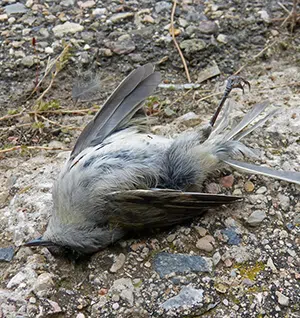 The trouble with the spread of Avian Flu is that infected birds can and will continue their normal activities and defecate in a number of locations on their flight path, potentially infecting several other birds (or, in rarer cases animals) along the way. And, an environment where many birds congregate can quickly become a hot bed for the spread of the virus.
The trouble with the spread of Avian Flu is that infected birds can and will continue their normal activities and defecate in a number of locations on their flight path, potentially infecting several other birds (or, in rarer cases animals) along the way. And, an environment where many birds congregate can quickly become a hot bed for the spread of the virus.
Airborne Transmission of Avian Flu
Although much less common, viral air particles can also be inhaled. This usually happens when feathers or dried bird droppings are stirred up and become airborne. Cleaning and disinfecting an area with large amounts of bird dropping should always be left to professional Bird and Wildlife Operators to ensure safety and prevent the spread of contaminants.
Contact with Contaminated Surfaces
Bird Flu an be transmitted through contact with surfaces contaminated with the virus from infected birds - think cleaning an eavestrough.
Contact with Contaminated Food and Water
Birds, other wildlife, and pets can become infected through contact with contaminated food and water supplies
Who is at Risk of contracting Bird Flu?
Agricultural workers, particularly poultry and cattle farm workers and operators face the highest risk of coming in contact with Bird Flu. To a lesser extent, landfill workers may also be exposed - even though there are strict regulations when it comes to the disposal of dead birds.
Signs of Avian Influenza
Birds infected with Avian Influenza
Most people's instinct is to help when we see a struggling animal. If you observe any of the following symptoms in a wild bird, please resist the urge to help or comfort:
- Lack of energy or movement - Lethargy
- Nervousness, tremors, or lack of coordination
- Swelling around the head, neck, and eyes
- Coughing, gasping for air, or sneezing
- Diarrhea
- Sudden death
Avian Flu in Pets
Domestic Pets, can become infected and suffer from Avian Influenza. Cats in particular can experience severe illness leading to eventual death from infection with H5N1. Dogs can also contract the virus, although they usually exhibit mild clinical signs and low mortality compared to cats. Here are some of the symptoms to look for:
- Lethargy and Weakness: A noticeable lack of energy or not doing normal activities.
- Fever: Elevated body temperature, which may make your pet seem more sluggish or uncomfortable.
- Vomiting or Diarrhea: Gastrointestinal upset that is unusual for your pet
- What to do if you find a Dead Bird
Read more: Ontarians are Warned to Avoid Contact with Wild Birds
It's Time to Apply for Migratory Bird Permits
- Written by: Dan Frankian
Good Lord, we're in the midst of a cold spell - why are we talking about Migratory Bird Permits?
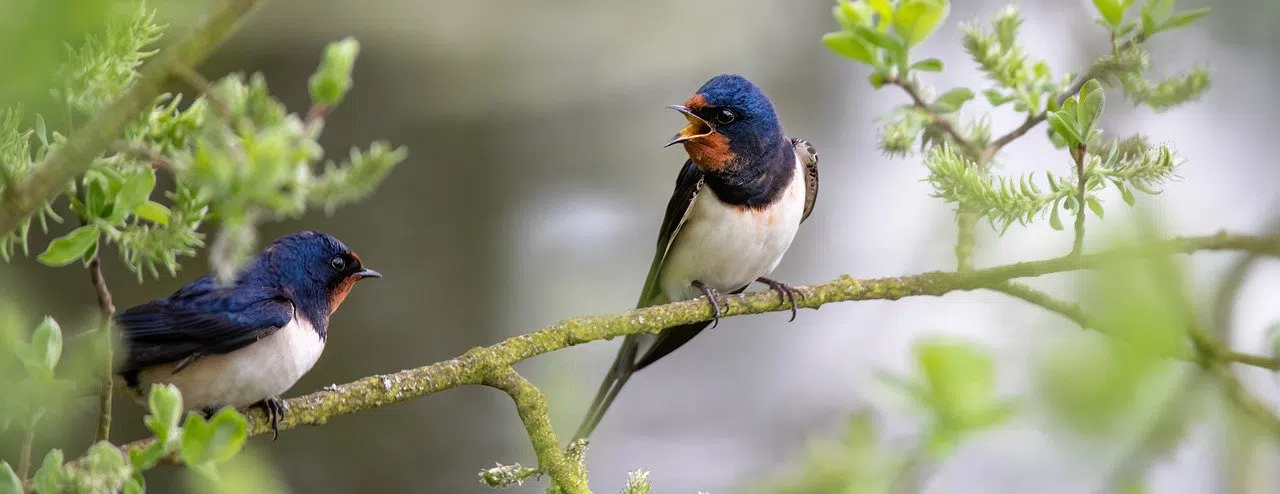
Most Bird Control Efforts require Migratory Bird Permits
While we may still be stuck in the middle of winter, pest bird season and with it the need to implement bird control and/or removal efforts is on its way. In Canada, most birds that cause problems or damages are protected under the Migratory Birds Convention Act and you are required to obtain one or more permits before attempting to deal with them. Some birds or municipalities may impose local restrictions in addition to the migratory bird permits. Depending on the permit requested, processing time can range from 2 to 8 weeks. It is important to note that once birds have started nesting, it's just about too late for any meaningful control measures. If nests contain eggs, they have to be left alone until the hatchlings have turned into fledglings and left the nest. The list of most common birds (or nests) that require relocation includes (but is not limited to):
Canada Geese
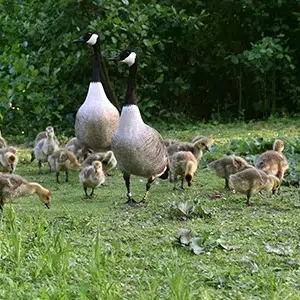 You can find Canada Geese in nearly any area with water, ponds, lakes, or rivers. They spend as much time in water as they do on land. Water is their safe zone to flee to when evading fox, coyote, and other predators. In urban environments, you will find geese on beaches, golf courses, in marinas, parks, or just about anywhere else offering a green space.
You can find Canada Geese in nearly any area with water, ponds, lakes, or rivers. They spend as much time in water as they do on land. Water is their safe zone to flee to when evading fox, coyote, and other predators. In urban environments, you will find geese on beaches, golf courses, in marinas, parks, or just about anywhere else offering a green space.
Gulls
Gulls (or often called Seagulls) are also found near water; beaches and marinas are favorite spots, as are mountenous terrains with cliffs.
Swallows
Swallows are in a whole different category and require extensive permits. Pay close attention to the type of swallow you are seeing: Barn Swallow, Bank Swallow, Cliff Swallow, Tree Swallow, etc.
Contact Hawkeye to Assist with Your Migratory Bird Permit(s)
You, as the property owner or manager are required to hold the necessary permits before we can assist with Bird Control or Removal. However, we can help you with your applications and together, we can ensure the you are ready to begin mitigating pest bird issues pro-actively.
Geese Control and Removal Services
Removal of Canada Geese remains one of the most requested services we provide. There are several windows of opportunities where certain methods may be used and/or are most effective. Because Canada Geese nest and hatch their young earlier than most other birds, we'll look at Geese Removal Services first and in a bit more detail:
Falconry
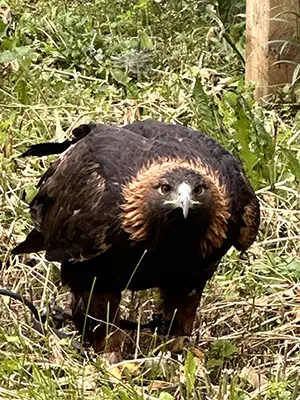 Falconry uses birds of prey, like hawks, falcons, and especially eagles, to chase geese from the air. Geese are extremely frightened of eagles scatter quickly. Further, because the raptors are actively chasing the geese, the geese will not habituate and will have the same reaction every time. Though this is one of the more labour intensive methods of goose control due to the high level of expertise needed to work with birds of prey, it is also by far the most effective.
Falconry uses birds of prey, like hawks, falcons, and especially eagles, to chase geese from the air. Geese are extremely frightened of eagles scatter quickly. Further, because the raptors are actively chasing the geese, the geese will not habituate and will have the same reaction every time. Though this is one of the more labour intensive methods of goose control due to the high level of expertise needed to work with birds of prey, it is also by far the most effective.
Dogs
Dogs are often used to chase geese and scare them from the ground. Like the raptors, the dogs represent an active threat to the geese, meaning that they will never get used to it. However, due to safety concerns, dogs cannot be used in some environments, like rooftops. Chasing geese with dogs is the most common goose control method on the ground and one of the most effective in many situations
Remote Operated Vehicles (ROVs)
We use ROVs to chase geese where it would be inconvenient or impossible for a dog or human to do so. Different types of drones are used to chase geese in the air, land, or water. Unfortunately, the technology can be fragile and easily lost, especially when in the water. ROVs are more robust and can be very effective in large bodies of water where geese can easily float or fly to the other side before the dogs can swim to them. Therefore, Hawkeye typically uses birds of prey, dogs, and ROVs together to chase geese away effectively.
Pyrotechnics
Hawkeye uses the firing of cracker shells, called bangers and screamers, that create loud sounds and bright firework-like visual displays to scare away the birds. The sounds and lights are startling and give the geese an extra push from the property. However, pyro is prohibited in some jurisdictions and is quite disruptive in residential areas. Further, because the loud sounds do not harm the geese, they will eventually learn to ignore them.
Do Birds Carry Disease From Landfills And Transfer Stations?
- Written by: Dan Frankian
Large flocks of birds (and other wildlife) are frequent visitors at landfills all across Canada. Other than negative impacts on bird health, what are some concerns?
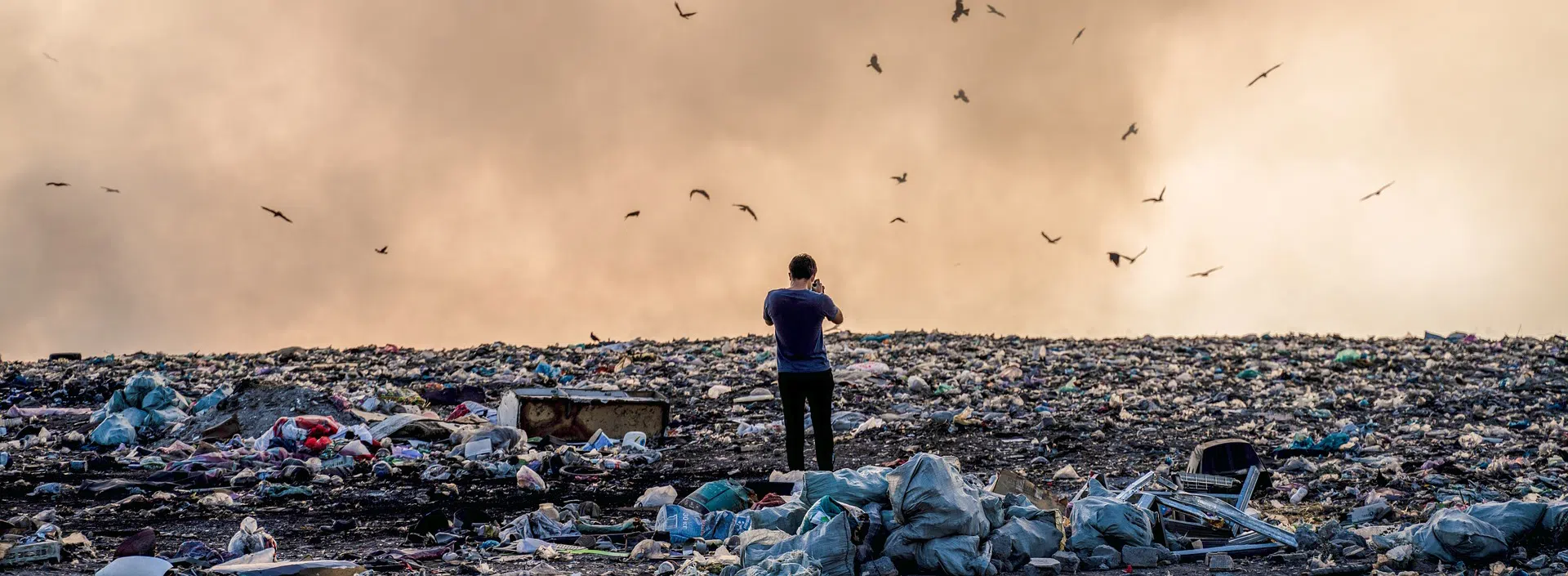
Why are there so many birds at Landfills and Transfer Stations?
Landfills remain the most common method for disposing of human trash, and attract a large variety of birds. The large quantities of food scraps found in active areas of trash disposal at landfills can dramatically alter bird ecology, with consequences for their populations and health.
What type of Birds are commonly found at Landfills?
Food resources at active landfills support carnivorous and scavenging species including:
- White Stork
- Bald Eagle
- Ring-billed Gull
- Turkey Vulture
- Crows
- Blackbirds
- Pigeons
- Starlings
What is the Issue with Birds at Landfills?
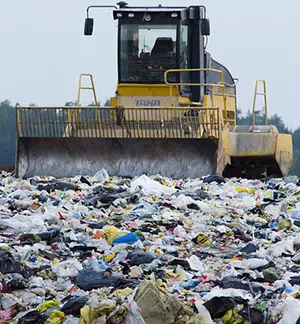 The food birds find in landfills can compensate for reductions in natural food availability and are thought to contribute to global increases in gull populations in spite of huge decreases in their natural marine-derived prey for the gulls. Landfills may also negatively influence biodiversity, by reducing abundance of sensitive species, directly through exposure to contaminants and pathogens, and indirectly by supporting human-adapted and exotic invasive species that outcompete some native species. Birds are a natural part of the ecosystem and their presence at landfill sites and transfer stations can pose significant risks, especially as vectors for infectious diseases. It is quite common to see huge swarms of birds at landfills and transfer stations because of the abundance of food found in the garbage. This can and does lead to ecological and public health concerns.
The food birds find in landfills can compensate for reductions in natural food availability and are thought to contribute to global increases in gull populations in spite of huge decreases in their natural marine-derived prey for the gulls. Landfills may also negatively influence biodiversity, by reducing abundance of sensitive species, directly through exposure to contaminants and pathogens, and indirectly by supporting human-adapted and exotic invasive species that outcompete some native species. Birds are a natural part of the ecosystem and their presence at landfill sites and transfer stations can pose significant risks, especially as vectors for infectious diseases. It is quite common to see huge swarms of birds at landfills and transfer stations because of the abundance of food found in the garbage. This can and does lead to ecological and public health concerns.
Public Health Concerns in Regards to Birds in Landfills
The high density of birds increases the potential for disease transmission from bird to bird, birds to other wildlife and birds to humans.
Vectors and Vector-Borne Diseases
A vector is a living organism that transmits an infectious agent from an infected animal to a human or other animal. Vectors are frequently arthropods, such as mosquitoes, ticks, flies, fleas and lice. Birds and animals can also be vectors. Vectors can transmit infectious diseases either actively or passively:
- Biological vectors, such as mosquitoes and ticks may carry pathogens that can multiply within their bodies and be delivered to new hosts, usually by biting.
- Mechanical vectors, such as flies can pick up infectious agents on the outside of their bodies and transmit them through physical contact.
These diseases that are transmitted by vectors are known as vector-borne diseases. Vector-borne diseases encompass a variety of diseases that are caused by the spread of pathogens by living organisms - vectors. These diseases can be human to human, animals to animals, animals to human, or bloodsucking insects to animals and humans.
Vector borne diseases account for more than 17% of all infectious diseases world wide. Some vectors are able to move considerable distances, for example: travel of humans internationally; animal movement - ie; livestock, migratory birds; or even through the wind.
Read more: Do Birds Carry Disease From Landfills And Transfer Stations?
What is a Trap Shy Raccoon?
- Written by: Dan Frankian
And, more importantly, what do you do about a trap-shy raccoon or other animal wildlife? Let's delve in...
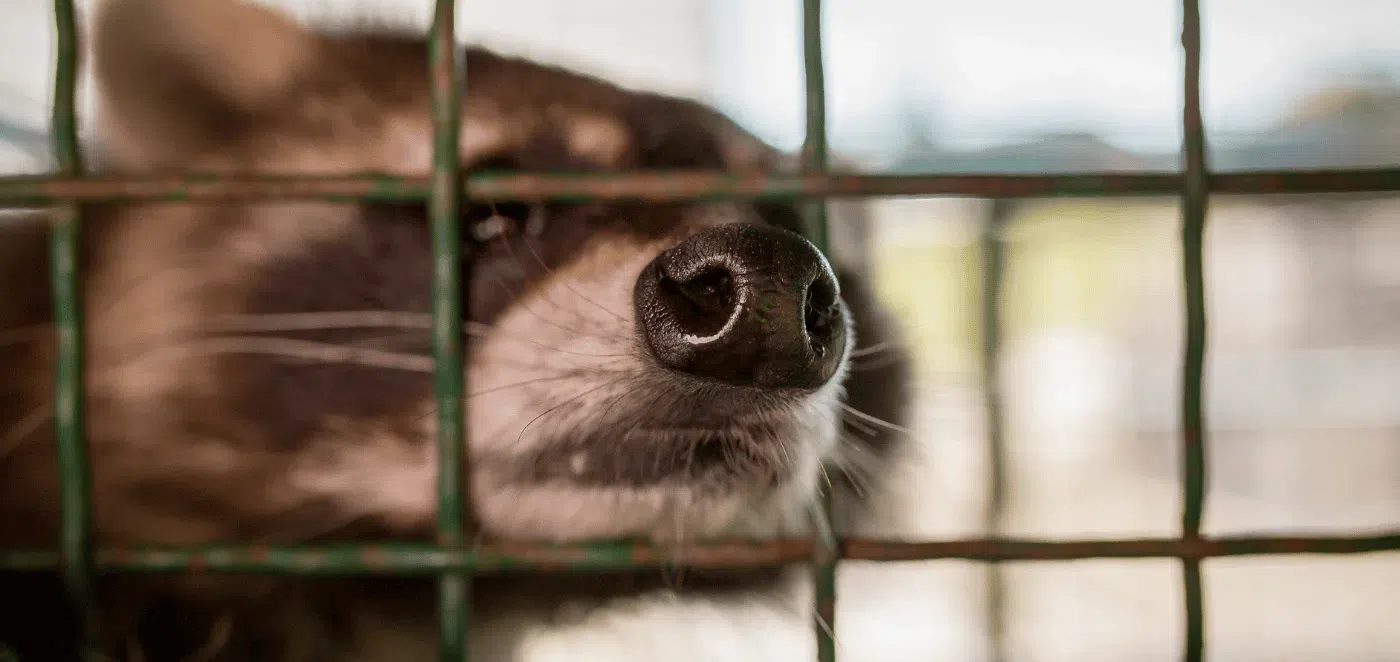
What Does Trap-Shy Mean?
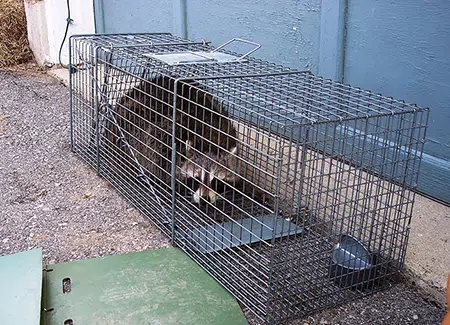 What does it mean when a raccoon or other animal is trap shy? A wild animal - especially a super smart raccoon - can become trap shy rather quickly. After one succssful trap and release ordeal, even. Let's look at what that may look like:
What does it mean when a raccoon or other animal is trap shy? A wild animal - especially a super smart raccoon - can become trap shy rather quickly. After one succssful trap and release ordeal, even. Let's look at what that may look like:
Recognizing a Trap
Raccoons are highly intelligent; they are task oriented little problem solvers, learn by observation and have a pretty decent memory. Once trapped and released, they will see a trap and remember what happened the last time they rushed in to grab a free snack. And, unlesss food is scarce at the moment and the treat you left in the trap is oh-too-tempting, they may graciously decline your offerings.
Watching Human Activity
Once a raccoon has had a trap and release experience, he may not only recognize a trap as such, but also recogize humans checking on the trap as related to his previous adventure. Once a trap has been set, it needs to be monitored regularly to ensure that the trapped animal is ok. So, a clever raccoon watching humans coming to check on the trap may very well be able to connect the dots.
Foregoing The Bait
While raccoons are opportunistic and usually happily go for little or no effort meals, they may make a wide berth around the trap and whatever yummy bait you may have set out if they associate the treat with a prior trapping experience.
How Do You Deal with a Trap Shy Raccoon?
If a raccoon has become trap shy, you'll need to acquire heaps of patience. Figuring out what to do with a trap-shy raccon may turn into a hit 'n miss exercise of when to trap, where to trap, and with what to trap. Buckle up!
When to Trap
While raccoons are nocturnal, they do mosey out 'n about during the daytime as well. However, they are most active between dusk and and the wee morning hours... so your trap should be set in the evening, before dark. Scout out where you want to put it and make the actual trap placement quick. Remember... you may be watched!
Where to Trap
If you know where the raccoon is snoozing during the day, place the trap outside its den. If you are aware of a travel route frequented by your furry trash panda, place it there. Along fence lines or hedges is a good spot, as most wildlife will avoid wide open spaces and travel alongside or under cover.
With What to Trap
So, let's talk about the trap itself: If you're dealing with a trap-shy animal you'll want the trap to be big. Bigger is better. Where normally a medium size trap would do the job, opt for a large one. This gives the illusion of space, rather than confinement. Whatever trap you use - camouflage it well. Use branches, leaves, sticks, etc to make it blend into the environment around it. A 2- way door trap can be a great idea, because it looks more like a tunnel or a passage way than.. well... a trap.
How to Trap a Trap-Shy Raccoon
Great. We have the trap, we have the disguise, and we figured out the perfect spot to place it. Actually, there's one more thing to consider: Raccoons are STRONG and determined. If possible, secure side of the trap to a fence or other structure with zip ties to prevent it from toppling over if rattled violently. After all this is in place - now what? How do we get the raccoon to get in? Ah.. enter the BAIT.
What Bait is Best to use to Trap a Raccoon?
 What do raccoons like to eat? Raccoons LOVE fish. And wet cat food, the smellier, the better. And eggs with or without bacon! But, did you know that raccoons also have a rather refined sweet tooth? They actually adore marshmallows. Peanut butter and jelly sandwiches - no longer just for the kids! Donuts and honey work, too. And sweet fruit is also on the list of favorites: water melon, honey melon and also sweet corn. If you have other wildlife (such as skunks!) around, you should probably stick with the sweets for your trap to avoid catching something unintended.
What do raccoons like to eat? Raccoons LOVE fish. And wet cat food, the smellier, the better. And eggs with or without bacon! But, did you know that raccoons also have a rather refined sweet tooth? They actually adore marshmallows. Peanut butter and jelly sandwiches - no longer just for the kids! Donuts and honey work, too. And sweet fruit is also on the list of favorites: water melon, honey melon and also sweet corn. If you have other wildlife (such as skunks!) around, you should probably stick with the sweets for your trap to avoid catching something unintended.
Non-Edible Bait
In addition to being the opportunistic little thieves that they are, raccoons are also very curious. A balled up sheet of tinfoil may look intriguing enough for a raccoon to come in for a closer look.
Where to Place the Bait?
Especially for a trap-shy animal, a bait trail should start outside of the trap. Sprinkle whatever your offerings are around the trap and in front of the opening. Those are the appetizers. Then place a bigger chunk of bait towards the back of the cage trap - far enough in, so that the door mechanism is tripped.
A Word of Caution
The more often you set a trap and don't catch a raccoon, the more this becomes a teachable moment for the animal. Chances are they watched you place the trap and/or the bait and they've figured out that just munching on what's outside of the trap is the way to go. If you're setting out traps and find the cage empty but the bait gone, it's time to call in the Professionals. You may have been outsmarted.
How Do I Permanently Get Rid of Raccoons?
- Written by: Dan Frankian
So you have a recurring raccoon problem? You are not alone. The trouble with most raccoon removal is the practice of trapping and releasing the animal within one kilometer of your home and that the animal will almost certainly return. In this article, we'll look at some habitat modifications you can make to help deter raccoons from making your home theirs, as well as how to get rid of raccoons once and for all.
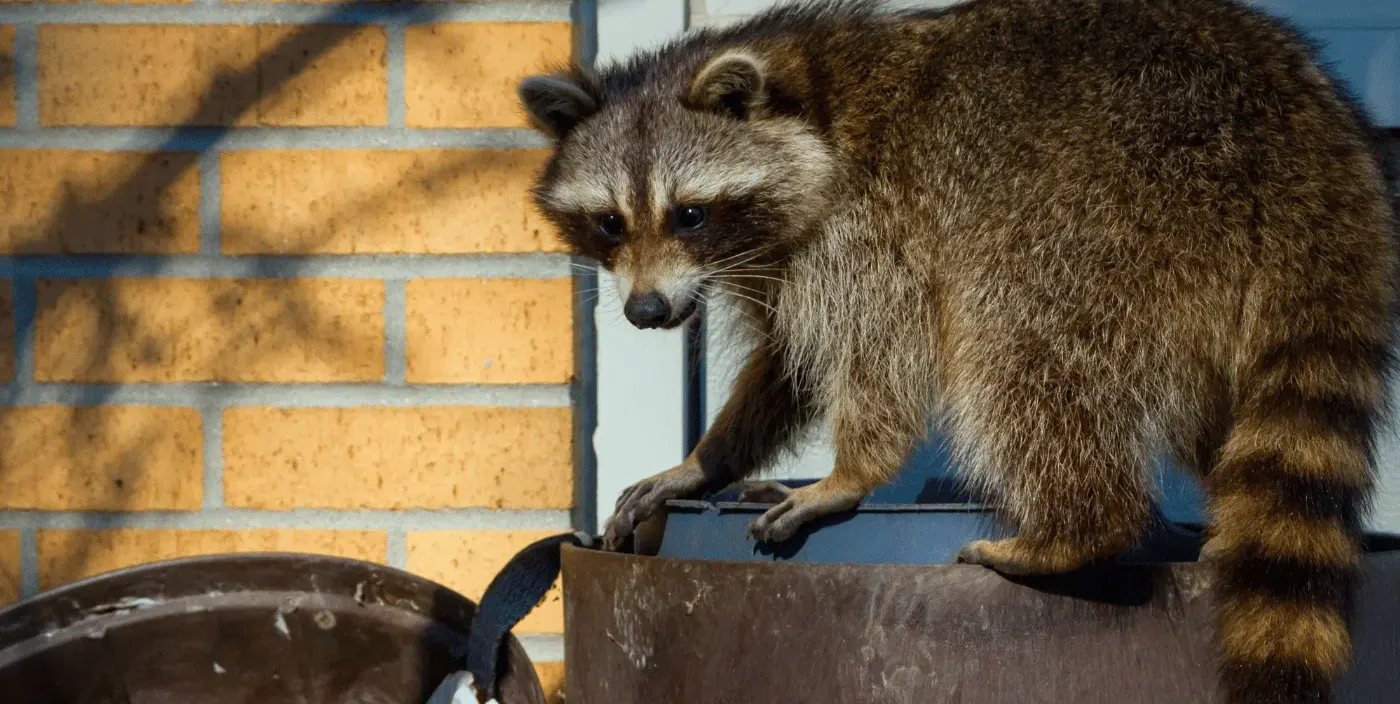
Raccoons are highly intelligent creatures and excel at adapting to changing circumstances and environments. That is why they are not only surviving, but actually thriving in urban centres such as Toronto, Mississauga, and Brampton. They also know a good thing when they see it; urban living makes for plenty of food with minimal effort in addition to some pretty posh spaces to make a home.
How Do You Get Rid of Raccoons?
Well, the general recommendations and practices all cite the following 3 methods:
- Trap and release within one kilometer of capture
- Minor habitat modification
- Exclusion to prevent entry into homes
While all of them have merit and will yield some positive results, none of them manage to address or solve the problem completely. Let's look at this in more detail:
Trap and Release Raccoons
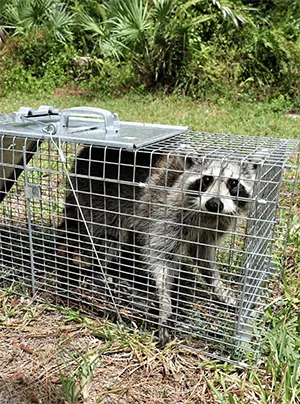 Live trapping a raccoon is really the only option you have as a home owner. MNR's Wildlife Regulations state that you must release the captured animal within a 1 kilometer radius of where it was caught. The main reasons for this are prevention of the spread of diseases and that animals transported farther away may end up attacked and/or starve due to having lost their territory. Trapping can also be tricky because most laymen aren't able to recognize a lactating female - potentially trapping a mum with babies left behind. This is something you'll want to avoid under any and all circumstances. Raccoon kits will be doomed to suffer a horrible death without the care of their mother. The other reason is to prevent the spread of disease.
Live trapping a raccoon is really the only option you have as a home owner. MNR's Wildlife Regulations state that you must release the captured animal within a 1 kilometer radius of where it was caught. The main reasons for this are prevention of the spread of diseases and that animals transported farther away may end up attacked and/or starve due to having lost their territory. Trapping can also be tricky because most laymen aren't able to recognize a lactating female - potentially trapping a mum with babies left behind. This is something you'll want to avoid under any and all circumstances. Raccoon kits will be doomed to suffer a horrible death without the care of their mother. The other reason is to prevent the spread of disease.
Remember how raccoons are very smart and crafty? Yeah, no self respecting raccoon will be caught more than twice - and now you're dealing with a trap shy animal.
But, let's say you did trap a raccoon.. there's no danger of babies, the animal appears healthy and you are driving off 1/2 kilometer or so and release the little bugger. Well done. But darnit, you could swear you're seeing the same bandit rummaging around your trash bin 3 days later. Yep, probably. He has a fine sense of direction and THIS is his home. Your home. Now what? We'll come back to this.
Habitat Modification
This is fairly simple and inexpensive; it includes adjusting your habits as well as those of the raccoon. Some minor changes may include:
- Removing all outdoor pet food or water bowls
- Emptying bird baths at night
- Securing trash and compost bins (store indoors, if possible)
- Trim tree branches close to the house and roof
- Trim shrubs and bushes around the bottom, thus removing protective cover
- General yard cleanup - remove fallen fruit from your fruit trees, etc.
Raccoon Exclusion
Next up are exclusion methods. This includes anything from general maintenance, roof inspection, closing up of any openings or cracks, installing chimney caps to erecting a fence around your vegetable garden, and much more. When closing up any openings, use heavy duty wire mesh and make sure everything is flush. Raccoons display an extraordinary amount of dedication when it comes to gaining access to your home, are incredibly good with their 'hands', and surprisingly strong. Something we have found quite worth while is Electrical Shock Track along fences and/or roof lines. This can be hooked up to a solar unit and is strong enough to jar and frighten a raccoon, but not enough to hurt him.


